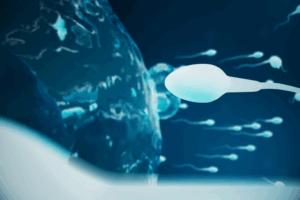
Gene therapy for azoospermia treatment
Introduction Male infertility, especially caused by azoospermia, affects millions of men worldwide. For those suffering from non-obstructive azoospermia, treatment options have been limited. However, thanks

Azoospermia, the complete absence of sperm in a man’s ejaculate, is a leading cause of male infertility. It affects about 1% of the male population and nearly 10–15% of infertile men. Until recently, treatment options were limited and often unsuccessful. However, with recent advancements in reproductive medicine, particularly in 2025, novel therapy for azoospermia is bringing new hope to affected individuals.
In this blog, we explore the most promising novel treatments for azoospermia, covering stem cell therapy, gene editing, hormonal innovations, and robotic surgical procedures. These emerging techniques are revolutionizing the way azoospermia is treated, increasing the chances of natural conception or assisted reproduction.
Azoospermia is defined as the absence of sperm in the semen. It can be broadly classified into two types:
Diagnosis typically involves semen analysis, hormone testing, scrotal ultrasound, genetic testing, and sometimes testicular biopsy.
Traditional therapies such as hormone treatments, surgical sperm retrieval, and IVF have shown limited success, especially for men with NOA. This has led researchers and clinicians to explore more advanced and personalized solutions—what we now call novel therapies for azoospermia.
These therapies aim to:
How It Works:
Stem cells, particularly spermatogonial stem cells (SSCs), can be harvested and reprogrammed to become sperm-producing cells. These are then transplanted into the testes, where they may initiate spermatogenesis.
Latest Advancements:
Benefits:
Challenges:
Mechanism:
CRISPR-Cas9 is used to repair defective genes responsible for impaired sperm production, such as Y chromosome microdeletions or Klinefelter syndrome.
Recent Developments:
Benefits:
Risks and Ethical Concerns:
Procedure:
Microdissection Testicular Sperm Extraction (micro-TESE) is enhanced with robotic systems, allowing for greater precision and less damage to testicular tissue.
Advantages:
Who Can Benefit:
Current Innovations:
Personalized Medicine Approach:
Emerging Techniques:
Benefits:
To support these advanced treatments, diagnostic techniques have also evolved:
These tools enable early diagnosis, better patient selection, and tailored therapies.
In many cases, novel therapy for azoospermia is combined with ART like ICSI (Intracytoplasmic Sperm Injection):
These integrations improve the chances of successful conception even in the most challenging cases.
Although advanced treatments are the focus, lifestyle still plays a critical role:
Supporting overall health improves the effectiveness of both conventional and novel therapy for azoospermia.
Dealing with infertility can be emotionally draining. In 2025, more fertility clinics are integrating psychological counseling and support services:
Mental health support improves emotional resilience and may even enhance treatment outcomes.
The future of azoospermia treatment looks promising. Key trends expected between 2025 and 2030 include:
These innovations may eventually make infertility a reversible condition in most men.
A 35-year-old man with NOA underwent experimental SSC transplantation in Mumbai. Within a year, semen analysis showed the presence of motile sperm, and he later fathered a child via ICSI.
A German clinic corrected a mutation in the SYCP3 gene using CRISPR in a 29-year-old patient. Testicular biopsy later confirmed restored spermatogenesis.
A patient previously deemed untreatable had sperm successfully retrieved using robotic-assisted micro-TESE in Boston and achieved pregnancy via IVF.
Q: Are these novel therapies safe?
Most are in clinical trial phases. Stem cell and robotic-assisted procedures have shown good safety profiles, while gene editing still needs long-term data.
Q: Can azoospermia be completely cured?
In some cases, yes—especially with OA. For NOA, these novel therapies offer the best hope for sperm recovery or conception.
Q: How much do these treatments cost?
Costs vary widely—from $5,000 for micro-TESE to $30,000+ for experimental stem cell or gene therapy.
The rise of novel therapy for azoospermia marks a new era in male infertility treatment. In 2025, options once considered science fiction—like stem cell regeneration, gene editing, and robotic microsurgery—are becoming clinical realities. These innovations not only offer hope but real, measurable success for men who previously had no options.
If you or your partner is affected by azoospermia, consult a fertility specialist familiar with the latest advancements. With personalized care and access to emerging therapies, parenthood may be closer than ever before.

Introduction Male infertility, especially caused by azoospermia, affects millions of men worldwide. For those suffering from non-obstructive azoospermia, treatment options have been limited. However, thanks

Azoospermia is one of the most challenging causes of male infertility, often leaving men with few options and couples struggling to conceive. But today, an
Prolistem, a patented formula, has not been evaluated by the Food and Drug Administration. This product is not intended to diagnose, treat, cure, or prevent any disease.
PROLISTEM® is a Patented Formula
Copyright © 2025 Prolistem®